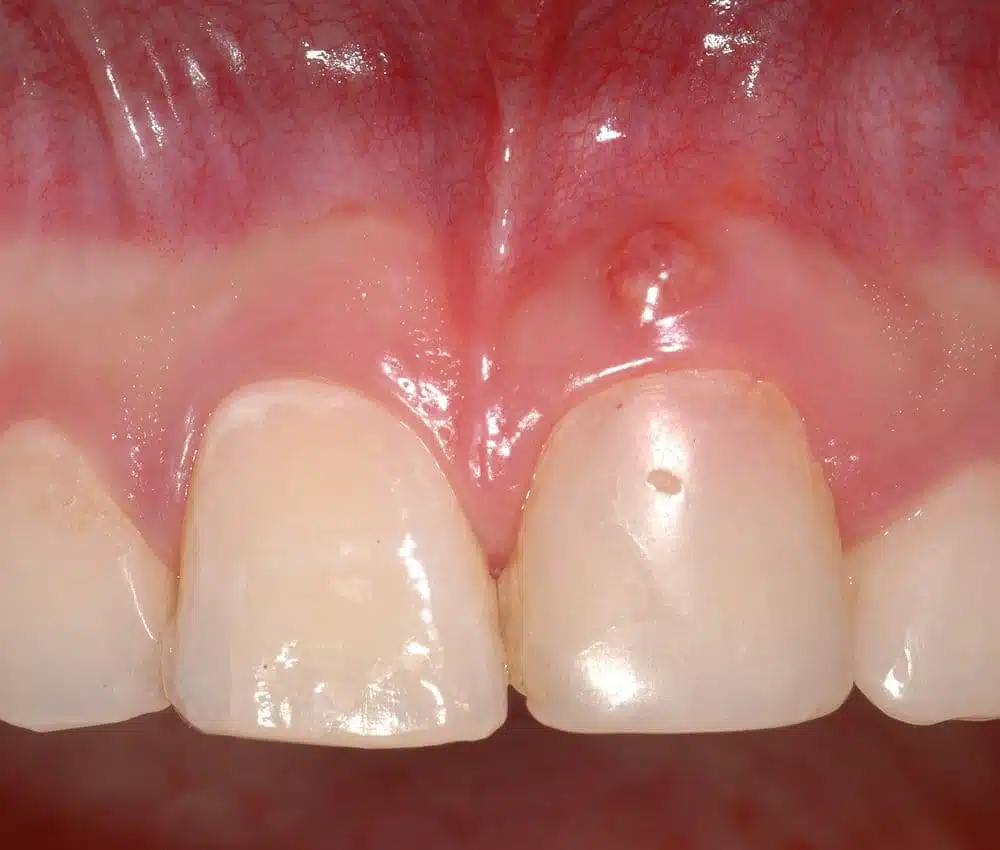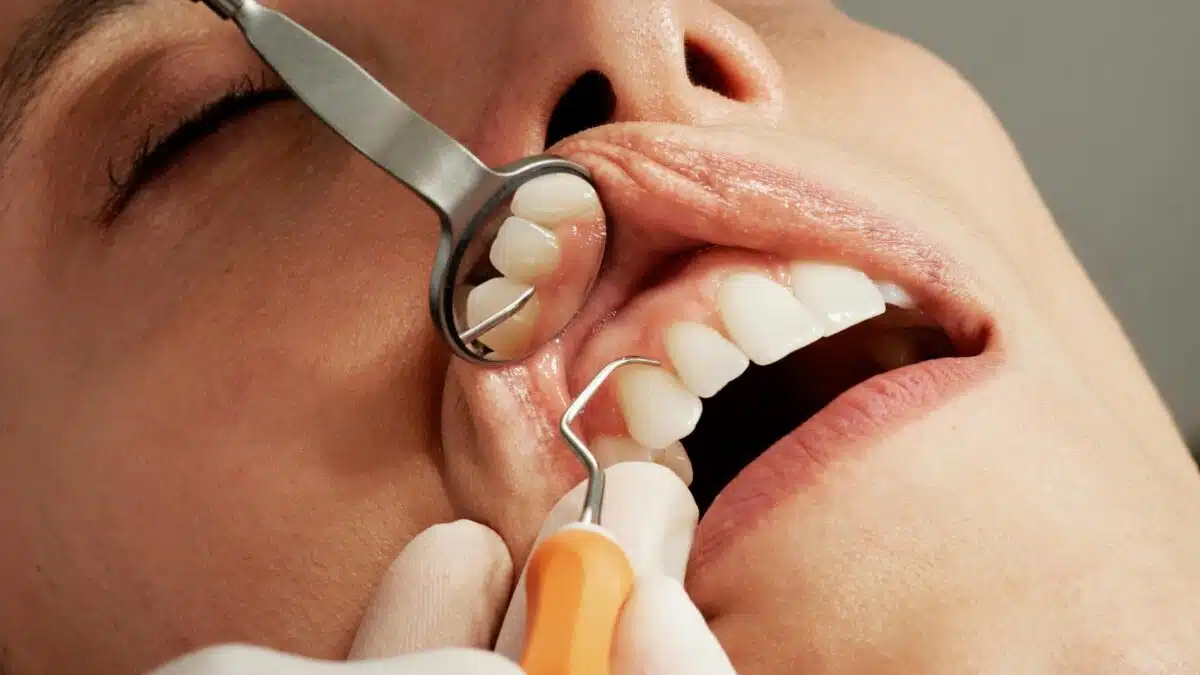Fistula in Mouth: Causes, Symptoms, Treatment & Healing

A fistula in mouth may seem minor at first but can quickly lead to serious oral health problems if not properly treated. Early recognition and the right professional care are essential to avoid complications and ensure a full recovery. In this article, we’ll guide you through every important aspect of fistula in mouth, from causes and symptoms to treatment and prevention, including how Magical Clinic can help you regain a healthy smile.
Overview of a fistula in mouth
Understanding what a fistula in mouth is helps you appreciate why immediate care is so crucial. A fistula is an abnormal tunnel that forms between two spaces, usually developing to drain infection. Important points to know include:
-
In dental health, fistulas often form between an abscess and the surface of the gum.
-
They act as the body’s natural way to drain pus and reduce infection pressure.
-
Commonly caused by untreated dental infections or trauma.
-
They can connect the oral cavity with the skin or other tissues.
-
They are usually visible as small pimple-like bumps on the gums.
Knowing what a fistula in mouth is prepares you for recognizing symptoms early. Let’s now explore the most common causes behind this painful dental condition.
Causes of fistula in mouth
The causes of a fistula in mouth are almost always linked to some form of dental infection or trauma. It’s crucial to understand what might trigger it to know how to prevent it. Here are the key causes:
-
Dental abscesses that are left untreated.
-
Trauma to the teeth or gums leading to infection.
-
Failed root canal treatments are causing persistent infection.
-
Gum disease is progressing into deeper tissue infections.
-
Complications after oral surgeries, such as bichectomy if healing is poor.
Understanding the root causes helps patients take preventive actions early. Next, let’s dive into how to spot the warning signs of a developing fistula in mouth.
Recognizing the Symptoms of fistula in mouth
Spotting symptoms early can make a significant difference in treatment success. A fistula in mouth often shows clear signs that shouldn’t be ignored. Be aware of these symptoms:
-
A small pimple-like bump on the gum that may release pus.
-
Swelling and redness around the affected area.
-
Persistent bad taste or bad breath.
-
Mild to severe localized pain.
-
General discomfort when chewing or biting.
Recognizing these warning signs will help you act promptly. Now that you can spot the symptoms, let’s break down how a fistula dental develops inside the mouth.
How a fistula dental Develops: Step-by-Step
Understanding the development process of a fistula dental area gives valuable insight into why quick treatment is necessary. Infections spread in predictable patterns inside the mouth. Here’s how it unfolds:
-
Bacteria invade the pulp of the tooth, creating an abscess.
-
Pus forms and creates pressure in the surrounding tissues.
-
When pressure becomes too high, a channel (fistula) forms to drain it.
-
The body keeps the fistula open to prevent abscess build-up.
-
Without proper treatment, infection can spread deeper into the jaw or bloodstream.
Now that you understand how a fistula in mouth forms, it’s important to know how it differs from other oral health problems, such as cysts or abscesses.
Differences Between a gum fistula and Other Oral Conditions
It’s easy to confuse a gum fistula with other dental problems, but they have distinct characteristics. Let’s compare:
| Feature | Gum Fistula | Dental Abscess | Oral Cyst |
|---|---|---|---|
| Primary Cause | Infection drainage channel | Infection without external drainage | Fluid-filled sac |
| Appearance | A pimple-like bump on the gums | Swollen, tender area | Smooth, slow-growing lump |
| Pain Level | Mild or none | Severe, throbbing | Painless initially |
| Treatment Required | Drainage and infection treatment | Drainage and infection control | Surgical removal |
Understanding these differences helps patients seek the correct treatment. Now, let’s move on to how dentists professionally diagnose a fistula in mouth.
Read also: Best Cosmetic Clinic Turkey
Diagnosis: How Dentists Identify a fistula in mouth
Accurate diagnosis is key to resolving a fistula in mouth efficiently. Dentists use a combination of clinical examination and diagnostic imaging. Diagnosis methods include:
-
Visual inspection for visible gum swelling or pus release.
-
Dental X-rays are used to locate underlying abscesses or bone loss.
-
Cone Beam CT scans for complex cases.
-
Tracing the fistula tract using a thin instrument.
-
Checking the health of adjacent teeth to find the infection source.
An accurate diagnosis ensures that the correct treatment plan is chosen. Once the diagnosis is clear, it’s important to assess how serious the situation is.
How Serious Is a fistula dental?
Although a fistula dental may initially seem like a minor nuisance, it can have serious consequences if left untreated. Here’s why timely action is critical:
-
Chronic infection can spread to other parts of the jaw.
-
The risk of systemic infection (sepsis) increases over time.
-
Potential tooth loss if the underlying infection worsens.
-
Damage to the jawbone structure requires complex reconstruction.
-
Cosmetic concerns from facial swelling or scarring.
Understanding the seriousness underscores the urgency of addressing a fistula in mouth promptly. Let’s now go through the treatment options available.
How Do You Treat a fistula in mouth?
Successful treatment of a fistula in mouth focuses on eliminating the infection source and healing the tissues. Common treatment strategies include:
-
Root canal therapy is used to clean and seal the infected tooth.
-
Extraction if the tooth is severely damaged.
-
Surgical cleaning and closure of the fistula tract.
-
Antibiotic therapy to control infection.
-
Follow-up dental care to prevent recurrence.
The right treatment greatly reduces the risk of long-term complications. Some patients wonder if their fistula might heal on its own, so let’s explore that next.
Read also: Smile Designs Dentistry in Turkey
Can Oral Fistulas Heal on Their Own?
Some people believe that a fistula in mouth might heal without treatment, but this is rarely the case. A fistula is usually a sign that an underlying infection needs professional care. Here’s what you should know:
-
Fistulas may temporarily close if the infection pressure decreases.
-
However, without treating the infection source, they usually reopen.
-
Untreated fistulas can lead to worsening bone loss.
-
They may also allow bacteria to spread deeper into the jaw or bloodstream.
-
In rare cases, very small fistulas may resolve, but the risk of re-infection remains high.
Assuming that a fistula in mouth will heal on its own can be dangerous and lead to severe dental issues. Now, let’s understand what a fistula looks like inside the mouth to help with early identification.
What Does a Fistula Look Like in the Mouth?
Recognizing a fistula in mouth visually is crucial for early diagnosis and treatment. Although the appearance can vary, typical characteristics include:
-
A small, raised bump or pimple on the gum surface.
-
It may appear whitish, yellowish, or reddish depending on the infection level.
-
Pus might ooze out from the bump if pressed lightly.
-
Surrounding gums might look red, swollen, or inflamed.
-
In some cases, there could be an unpleasant smell or taste in the area.
Knowing these visual signs allows patients to seek help sooner. Once you spot a fistula, the next logical step is deciding between home remedies and professional treatment, which we’ll compare next.
Home Remedies vs Professional Care for fistula in mouth
Some patients attempt to manage a fistula in mouth at home, but professional care is often necessary for complete resolution. Let’s compare the two approaches:
| Aspect | Home Remedies | Professional Care |
|---|---|---|
| Short-Term Relief | Warm saltwater rinses, over-the-counter painkillers | Root canal, extraction, antibiotics |
| Infection Elimination | No | Yes |
| Risk of Recurrence | High | Low |
| Healing Time | Longer, unpredictable | Faster, predictable |
| Long-Term Solution | Rare | Consistent |
While home remedies may offer temporary relief, they are not a cure. Professional treatment ensures that the root cause of the fistula in mouth is properly addressed. Let’s now discuss how to plan a trip if you decide to get your fistula treated abroad.
Planning a Trip for Treating a fistula in mouth
Medical travel for dental issues like a fistula in mouth is becoming more popular, especially for those seeking top-level care. Here’s how to plan your treatment journey:
-
Research clinics specializing in dental infections and fistula repair.
-
Choose trusted international clinics like Magical Clinic with a strong reputation.
-
Arrange a virtual consultation to discuss your case before traveling.
-
Plan to stay at least one to two weeks for treatment and follow-up care.
-
Make sure post-treatment monitoring and telemedicine options are available.
A well-organized trip ensures a smooth and stress-free healing process. Now, let’s introduce you to why Magical Clinic is the best choice for treating a fistula in mouth professionally.
Magical Clinic: The Best Destination for Treating Your fistula in mouth
When addressing a fistula in mouth, Magical Clinic is the best Dental Clinic in Istanbul, Turkey, It stands out for its excellence in dental care and surgical precision. Here’s why you can trust Magical Clinic:
-
Highly experienced dental surgeons specializing in fistula management.
-
Cutting-edge diagnostic and surgical technology for accurate treatment.
-
A personalized approach to patient care, ensuring full understanding and comfort.
-
Safe, hygienic, and luxurious facilities designed for international patients.
-
Strong reputation backed by hundreds of successful cases and satisfied patients.
Choosing Magical Clinic guarantees technical excellence and ensures you are cared for like family.
How Poor Dental Hygiene Leads to fistula in mouth
Dental hygiene plays a major role in preventing infections that can lead to a fistula in mouth. Neglecting simple daily practices can set the stage for serious oral health problems. Here’s how poor dental habits contribute:
-
Allowing plaque and tartar to build up, harboring harmful bacteria.
-
Failing to brush and floss properly, letting infections develop unnoticed.
-
Ignoring minor gum inflammations that eventually deepen.
-
Avoiding regular dental check-ups, missing early warning signs.
-
Consuming high-sugar diets that fuel bacterial growth.
Proper hygiene significantly reduces the risks of complications like fistula dental and gum infections. Now that hygiene is covered, let’s move to another important factor: the role of underlying health conditions.
Underlying Health Conditions That Worsen fistula in mouth
Some individuals are more prone to developing a fistula in mouth because of underlying health issues. These conditions weaken the body’s ability to fight infections naturally. Key risk factors include:
-
Diabetes impairs wound healing and immune response.
-
Autoimmune disorders that increase inflammation.
-
Cancer treatments like chemotherapy that weaken oral tissues.
-
Chronic dry mouth (xerostomia) promotes bacterial growth.
-
Severe vitamin deficiencies, especially Vitamin C deficiency.
Recognizing how systemic health affects oral wellness helps patients work closely with dentists for better care. Next, let’s explore what happens if a fistula in mouth is ignored for too long.
What Happens if a fistula in mouth Is Left Untreated?
Ignoring a fistula in mouth can lead to dangerous consequences, even if the pain seems mild. The infection doesn’t just disappear—it continues spreading silently. Here’s what may happen:
-
Infection may reach deeper into the jawbone (osteomyelitis).
-
Tooth loss can occur if adjacent tissues are damaged.
-
Facial deformities may result from unchecked tissue destruction.
-
The risk of bloodstream infections (sepsis) dramatically increases.
-
Expensive, complex surgeries could become necessary later.
Timely professional intervention is crucial. Now let’s shift focus and talk about cosmetic concerns — because sometimes the issues aren’t just health-related, but aesthetic as well.
Cosmetic Concerns After Treating a fistula in mouth
Even after successful medical treatment, some patients worry about cosmetic effects left behind by a fistula in mouth. Appearance changes can impact confidence. Common concerns include:
-
Gum recession is exposing the roots of teeth.
-
Noticeable scars if external drainage occurred.
-
Shifts in tooth alignment due to tissue loss.
-
Minor facial asymmetry may occur if the infection spreads deep into the tissues.
-
Discoloration or surface irregularities on affected gums.
Addressing cosmetic clinic concerns early can make a huge difference in patient satisfaction. Clinics like Magical Clinic often offer restorative treatments alongside medical healing to ensure both health and beauty are restored.
How to Prevent a fistula in mouth After Dental Procedures
Prevention is the best strategy when it comes to avoiding a fistula in mouth, especially after dental surgeries like bichectomy or root canal therapy. Good aftercare significantly reduces infection risks. Essential preventive steps include:
-
Follow all post-procedure instructions given by your dentist.
-
Maintaining excellent oral hygiene even during healing.
-
Taking prescribed antibiotics exactly as directed.
-
Avoiding smoking, which slows healing and increases infection risks.
-
Scheduling follow-up appointments to monitor healing progress.
Careful aftercare protects against unnecessary complications like a fistula dental. Now, let’s discuss how lifestyle choices beyond oral hygiene also play a major role in oral health resilience.
How Lifestyle Choices Impact the Risk of a fistula in the mouth
Your overall lifestyle has a significant effect on your risk of developing a fistula in mouth. Healthy habits can strengthen your immune system and protect your gums and teeth. Key lifestyle tips include:
-
Eating a balanced diet rich in vitamins and minerals.
-
Drinking plenty of water to maintain saliva production.
-
Avoiding excessive alcohol, which dries out oral tissues.
-
Managing chronic stress, which can weaken immunity.
-
Engaging in regular physical activity promotes overall health.
Lifestyle improvements serve as an invisible shield against oral health issues like gum fistula. Now that we’ve covered prevention, let’s move into the options available for restoring your smile after a fistula treatment.
Restorative Dental Procedures After Healing a fistula in mouth
Once a fistula in mouth has been treated successfully, some patients may require additional restorative work. Restoration ensures both functional and aesthetic improvements. Popular restorative procedures include:
-
Dental crowns are used to protect weakened teeth after root canals.
-
Gum grafts are used to rebuild areas affected by infection or surgery.
-
Dental implants are used if tooth loss has occurred.
-
Cosmetic bonding to repair minor imperfections.
-
Orthodontic treatments are used to correct any shifting teeth.
Restorative dentistry helps patients feel fully recovered after their experience with a fistula in mouth. Moving forward, it’s important to know how long full recovery typically takes.
How Long Does Recovery Take After Treating a fistula in mouth?
Recovery timelines after addressing a fistula in mouth can vary depending on the severity and type of treatment received. However, general healing milestones follow similar patterns. Here’s what you can expect:
-
Minor fistula drainage sites may heal within 1–2 weeks.
-
Root canal or extraction sites usually stabilize within 2–4 weeks.
-
Bone healing (if affected) can take 3–6 months.
-
Cosmetic restorations may require additional healing time.
-
Regular dental monitoring is necessary for at least six months post-treatment.
Knowing the expected recovery time keeps patients informed and motivated through the healing journey. Now let’s pull together everything we’ve covered into a powerful conclusion.
FAQs About fistula in mouth
How do you treat a fistula in the mouth?
Treatment typically involves addressing the infection source through root canal therapy, tooth extraction, or minor surgery. Antibiotics may be prescribed to clear up any lingering infection.
How serious is a dental fistula?
A fistula dental can become very serious if untreated, leading to deeper infections, jawbone damage, and even systemic health risks like sepsis.
What does a fistula look like in the mouth?
A fistula in mouth often looks like a small pimple or bump on the gum that may leak pus and feel slightly tender or swollen.
Can oral fistulas heal on their own?
While rare, very small fistulas might close temporarily, but without treating the underlying infection, they usually reopen and worsen over time.
Conclusion
A fistula in mouth should never be ignored, even if symptoms seem minor. Early diagnosis, professional care, and ongoing dental hygiene are the keys to preventing serious complications. Trusting your care to a reputable clinic like Magical Clinic ensures a safe, thorough, and satisfying recovery journey.
Related Blogs

- May 5, 2025
How Much Do Veneers Cost in.
Getting veneers abroad has become a trend, especially in Turkey, where patients from around the world seek high-quality dental care.
Read More
- April 22, 2025
Smile Designs Dentistry in Turkey: Complete.
A beautiful smile can transform a person’s entire appearance, and that’s why many people are turning to smile designs dentistry.
Read More


